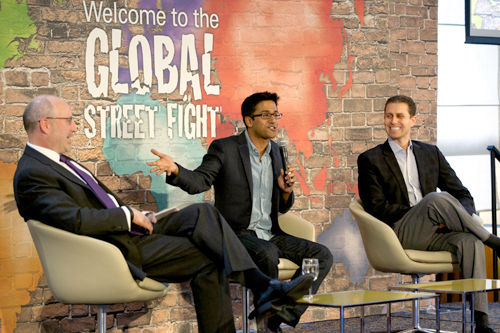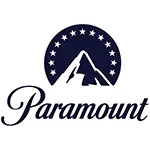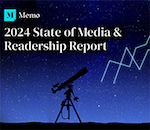Print magazines like Forbes don’t have a readership problem, they have an advertising problem, Forbes Media chief revenue officer Mark Howard told Gibbs & Soell's annual "Welcome to the Global Street Fight" event in New York on April 11.
"Readers are excited as ever to read and consume," he said, "to see what our editors have curated and see what they want readers to know. …People appreciate the finite experience of a magazine with a beginning, middle and end." But technology has introduced hypertargeting and microtargeting to the ad realm, metrics that don't translate well to print media that have to bridge that divide. "There is value in the messages in advertising that goes with the content. The challenge is providing metrics that you get from the web."
"I still think print has a place in the ecosystem," said Jimmy Soni, managing editor of The Huffington Post who said he reads The New Yorker, GQ and The Economist, among print publications. "It's a different reading experience."
Soni said the "journalism is dead" argument amid the rise of digital is answered by outlets like Politico, Pro Publica, HuffPost, BuzzFeed and UpWorthy, all founded in the last 10 years. "Many are generating content that wouldn't have otherwise been produced," he said. Asked by G&S president/CEO Luke Lambert about the gripe that most new media get content from "old media," Soni said operations like Politico and HuffPost spend "enormous amounts of money and time creating stuff out of whole cloth."
'Net Not a Zero-Sum Game for Readers
 Luke Lambert, president/CEO of Gibbs & Soell, Jimmy Soni, managing editor, The Huffington Post, and Mark Howard, chief revenue officer, Forbes Media. Luke Lambert, president/CEO of Gibbs & Soell, Jimmy Soni, managing editor, The Huffington Post, and Mark Howard, chief revenue officer, Forbes Media. |
Soni, who confessed that it's not his job to find a way to monetize the content his publication produces, said social media has provided infinite potential for eyeballs, expanding readership and changing the PR game.
He said the Internet has also made the media ecosystem "less hostile" and more open to collaboration. "Partnerships are now the coin of the realm," he said. "We work with BuzzFeed or UpWorthy as their eyeballs might become ours. It's not a zero sum game on the Internet. …Most people in this room probably consume around 50 news sources a day."
"The era of the blind pitch is over," he said, noting that he does not read unsolicited email or pitches "unless you split the atom." Soni said there are two key factors to the PR realm right now. First: "Be so good we can't ignore you." He pointed to JPMorgan Chase as an example of a company that has attracted its share of negative headlines, also garnering coverage for its work with veterans. And second: "Recognize that you're more in charge of your story than you've ever been." He cited Volkswagen’s viral ad featuring actor Jean Claude Van Damme as an example of company-produced content that garnered wide coverage. Another example was clothing retailer Gap's empathetic response to racist graffiti on one of its ads that sparked a "Thank you, Gap" campaign.
He said a company like Goldman Sachs, "a company we often go after," works with HuffPost on their small business initiatives, through paid content and advertising.
Forbes' Native Ads, Digital Growth
Howard said the magazine is the "front door to our brand," which also encompasses digital and conference and events. "Who we profile on the cover is very important to the business world," he said. But the foundation for Forbes' road to digital credibility and growth came from separating the magazine from its Internet push.
Howard said in 2000-01 Tim Forbes spun out Forbes.com as a separate entity from the then-84-year-old magazine to allow breathing room "to figure it out for ourselves." He cited Forbes' decision to buy the content platform True/Slant in 2010, which compensated writers by both monetary payment and via advertising and sponsorship revenues of their pages. The move coincided with media job cuts that left a lot of writers out of work without a platform on which to produce content. Many embraced the True/Slant platform and provided a wide range of professional content to grow the site, which, Howard noted, is not a news site but a forum for opinion and analysis of news and issues.
Forbes also in 2010 rolled out its native ad platform BrandVoice, which affords significant control to advertisers producing editorial for the Forbes site. The posts are clearly marked as BrandVoice content. Howard said advertisers are taught to use Forbes' content management system and publish "just like editorial staffers." Advertisers get a monthly site license that allows them an unlimited number of posts. The platform is expected to make up to 30% of Forbes' ad revenue by 2014.
HuffPost Writers Know Audience Data
Soni said the HuffPost's success has come in part because its staffers are as focused on publishing as much as content. "Editors know data patterns, audience development," he said. "You can't bury your head in the sand about where your audience is coming from."
He called the Post "unapologetic" in its approach to journalism, which encompasses news, humor and opinion, among other tenets.
The HuffPost in 2012 became the first digital media outlet to win a Pulitzer Prize for senior military correspondent David Wood's "Beyond the Battlefield" series on wounded veterans and their families. "It sent a wakeup call to the industry that the Internet is not a dirty word," said Soni," that you can reach a large audience with quality content."


 Trump Media & Technology Group today reported a $58.2M net loss on $4.1M in 2023 revenues, a disclosure that drove its stock price down 22.6 percent to $47.96.
Trump Media & Technology Group today reported a $58.2M net loss on $4.1M in 2023 revenues, a disclosure that drove its stock price down 22.6 percent to $47.96. Barry Pollack, an attorney at Wall Street’s Harris St. Laurent & Wechsler, has registered Julian Assange as a client with the Justice Dept. “out of an abundance of caution.”
Barry Pollack, an attorney at Wall Street’s Harris St. Laurent & Wechsler, has registered Julian Assange as a client with the Justice Dept. “out of an abundance of caution.” Paramount Global to slash 800 jobs in what chief executive Bob Bakish calls part of an effort to “return the company to earnings growth"... Rolling Stone editor-in-chief Noah Shachtman is exiting at the end of the month due to disagreements with chief executive Gus Wenner over the direction the magazine is taking... The New York Times broke the $1 billion barrier in annual revenue from digital subscriptions in 2023... Press Forward is investing more than $500 million to strengthen local newsrooms.
Paramount Global to slash 800 jobs in what chief executive Bob Bakish calls part of an effort to “return the company to earnings growth"... Rolling Stone editor-in-chief Noah Shachtman is exiting at the end of the month due to disagreements with chief executive Gus Wenner over the direction the magazine is taking... The New York Times broke the $1 billion barrier in annual revenue from digital subscriptions in 2023... Press Forward is investing more than $500 million to strengthen local newsrooms. The majority of news articles are read within the first three days of publication, according to a recent report.
The majority of news articles are read within the first three days of publication, according to a recent report. The Los Angeles Times gives pink slips to 115 people or 20 percent of its newsroom staff... TIME is also laying off about 30 employees, which is approximately 15 percent of its editorial staff... The Baltimore Banner, which was launched by Stewart Bainum in 2022 after he failed to buy the Baltimore Sun, added 500 subscribers per day in the three days following Sinclair Broadcast Group's deal to purchase the Sun.
The Los Angeles Times gives pink slips to 115 people or 20 percent of its newsroom staff... TIME is also laying off about 30 employees, which is approximately 15 percent of its editorial staff... The Baltimore Banner, which was launched by Stewart Bainum in 2022 after he failed to buy the Baltimore Sun, added 500 subscribers per day in the three days following Sinclair Broadcast Group's deal to purchase the Sun.


 Have a comment? Send it to
Have a comment? Send it to 
No comments have been submitted for this story yet.